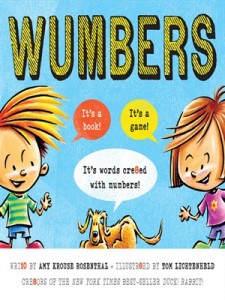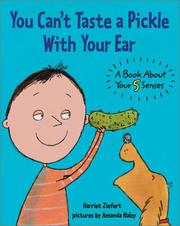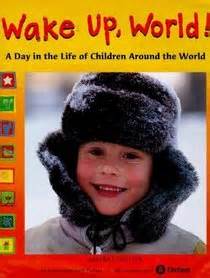Wumbers
 “What do you get when you combine a word with a number? A wumber!” Wumbers is wri10 by Amy Krouse Rosenthal and illustr8ed by Tom Lichtenheld, the dynamic duo who made Duck! Rabbit! and other books I love passion8ly. With Wumbers, kids have 2 pay at10tion to the sound of the number word to figure out how to read the wumber. 1ce your students get the gist of it, they’ll want 2 make up wumbers of their own!
“What do you get when you combine a word with a number? A wumber!” Wumbers is wri10 by Amy Krouse Rosenthal and illustr8ed by Tom Lichtenheld, the dynamic duo who made Duck! Rabbit! and other books I love passion8ly. With Wumbers, kids have 2 pay at10tion to the sound of the number word to figure out how to read the wumber. 1ce your students get the gist of it, they’ll want 2 make up wumbers of their own!
Because Wumbers focuses kids’ attention on the small sounds in words, it’s an ideal book to hit the CCSS of Phonological Awareness. Distinguishing the numbers from the letters in the words is part of Print Concepts. 1 book for 2 standards = gr8ful teacher and 4tunate students!
As you read Wumbers to your students, call at10tion first to the way the wumber looks. What number is mixed with letters to make a new word? 1ce students identify the number, say it out loud a few times, then blend the number name with the other letters slowly. Let kids have the thrill of calling out the wumber. It7ly! (Get it – it’s heavenly? Ok, I’m still working on a good one for 7.)
Before you let your students loose on reading and writing wumbers on their own, practice as a group. Choose a number, an easy one like 2 or 4 (because obviously 7 will pose challenges, even for those of us with plenty of wumber po10tial.) Write the number word and any phonological variations: 2 is two, to, too, tu, etc. Now, see if you can come up with words that have that to-tu sound in them. Tuba becomes 2ba. Toothbrush becomes a 2thbrush. Because she is genius, Amy Krouse Rosenthal has a free activities kit available through her website: whoisamy.com. If you and your students come up with some 1derful wumbers, email me! 2gether we will celebr8 Wumbers!
For more about the illustrator, please visit tomlichtenheld.com.
Read MoreFree, safe images for students
 Let’s imagine that you and your students have gone on a field trip to the Henry Ford Museum in Dearborn, Michigan (which, if you can, I highly recommend that you do so because the place is a-ma-zing.) Imagine one of your students wants to write about his favorite part of the trip – seeing the Oscar Meyer Wienermobile. He didn’t take any photos on the trip, so he wants to search for images online to add to his writing. Imagine what might happen if your student uses a typical search engine to look for images of wienermobiles.
Let’s imagine that you and your students have gone on a field trip to the Henry Ford Museum in Dearborn, Michigan (which, if you can, I highly recommend that you do so because the place is a-ma-zing.) Imagine one of your students wants to write about his favorite part of the trip – seeing the Oscar Meyer Wienermobile. He didn’t take any photos on the trip, so he wants to search for images online to add to his writing. Imagine what might happen if your student uses a typical search engine to look for images of wienermobiles.
Now imagine that you are a highly-prepared, tech-savvy teacher (easy to do, because you so are.) When your students want to add images of a wienermobile, or a titmouse, or any image, you guide them to search on Pics4Learning. It’s safe, it’s free, and the images are copy-right friendly.
Before you open up Pics4Learning, imagine the joy every artist will feel if you give your students a quick lesson on copyright first. Ask your students to imagine that they have worked tirelessly to create a fantastic work of art. Imagine posting a photo of said masterpiece online to share your art with family and friends. Now imagine that some random person online decides to right-click the photo of your masterpiece, copy and paste it, and use your work as if they made it. Imagine the outrage! Now your students may understand how artists feel when their images are copied and taken without any recognition or attribution. Just because you *can* right-click and copy an image doesn’t mean you *should*. Use a site like Pics4Learning instead, and there will be no breaking of copyright issues, or any uncomfortable discussions about when searching for images of blue-footed boobies.
Read MoreYou Can’t Taste a Pickle With Your Ear
 When it comes to Common Core State Standards, the one that I think is the most fun is Range of Reading. (I know, I know, all the CCSS are fun, but this one is the most fun!) Range of Reading: Informational Text means we want kids to “read and comprehend informational texts, including history/social studies, science, and technical texts.” In other words, we can share all kinds of cool nonfiction books with our students, and I have a fun pick this week.
When it comes to Common Core State Standards, the one that I think is the most fun is Range of Reading. (I know, I know, all the CCSS are fun, but this one is the most fun!) Range of Reading: Informational Text means we want kids to “read and comprehend informational texts, including history/social studies, science, and technical texts.” In other words, we can share all kinds of cool nonfiction books with our students, and I have a fun pick this week.
You Can’t Taste a Pickle With Your Ear: A Book About Your 5 Senses by Harriet Ziefert with pictures by Amanda Haley is an informational picture book with a great sense of humor. It has some nice text features like a table of contents, an introduction, a conclusion, and questions at the end of each mini-chapter for discussion. The information presented about the five senses is appropriate for early elementary students and will work well for any “all about me” units as well as for health and science studies.
Read aloud the title You Can’t Taste a Pickle With Your Ear and you’ll get students grinning. You can read the 32-page book in one sitting, or read each mini-chapter devoted to a different sense one at a time. For an art activity that will bring together all the information in the book (so we’re Integrating Knowledge & Ideas as well as working on Range of Reading), have students make a self-portrait and label the body parts they use for each of the five senses. To get those Nature Smart/experiential learners really involved, bring in pickles for the class. Students can write about how they used each of their five senses as they look at, smell, touch, hear (long crunchy pickles that snap in half work best), and taste. Remind your students again about the title of the book (but keep paper towels on hand in case any of your students feel the need to test for themselves.)
Read MoreWake Up, World!
 “We all should know that diversity makes for a rich tapestry, and we must understand that all the threads of the tapestry are equal in value no matter what their color.” – Maya Angelou
“We all should know that diversity makes for a rich tapestry, and we must understand that all the threads of the tapestry are equal in value no matter what their color.” – Maya Angelou
Books that celebrate diversity are perfect at the beginning of a new school year. We want our students to know that all of us are valued because of, not in spite of, the unique characteristics we possess. Wake Up, World! A Day in the Life of Children Around the World by Beatrice Hollyer in association with Oxfam shows students in an accessible way what life is like in different parts of the world.
Meet eight children from places like Vietnam, Ghana, Brazil, and the United States. From waking up and eating breakfast, to going to school and doing chores, to going to bed (or hammock), readers will love the photos and descriptions of what life is like for kids just like them in other countries. (You will love how easy it is to work in Range of Reading and Integrating Knowledge & Ideas with one book, and even tie it into a mapping unit if you are so inclined.)
One of the children, Natali, is from California in the United States. With the paragraphs about Natali especially, your students may find themselves saying “that’s just like me!” or “I don’t do that!” You can play a game called “Cross the Line” with information you find in this book. Line all of your students on one side of your classroom, and either imagine a line down the middle of the room, or put one there with masking tape (and thank your custodial staff for being so nice to teachers who put down tape on the floor.) Choose situations from the book like “if you drink walk to school like Linh from Vietnam does, cross the line.” Students can easily see who shares that characteristic with them. Wake Up, World! is also an ideal writing prompt. Your students can write about what they eat for breakfast, etc. for a book like “Our Classroom Wakes Up”or for individual books.
For more information about Oxfam, please visit oxfam.org.
Read More






